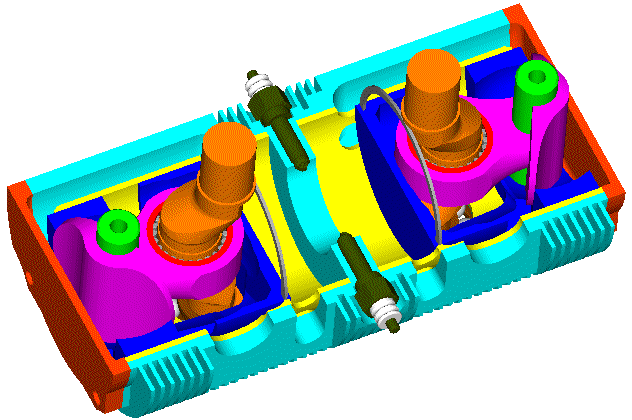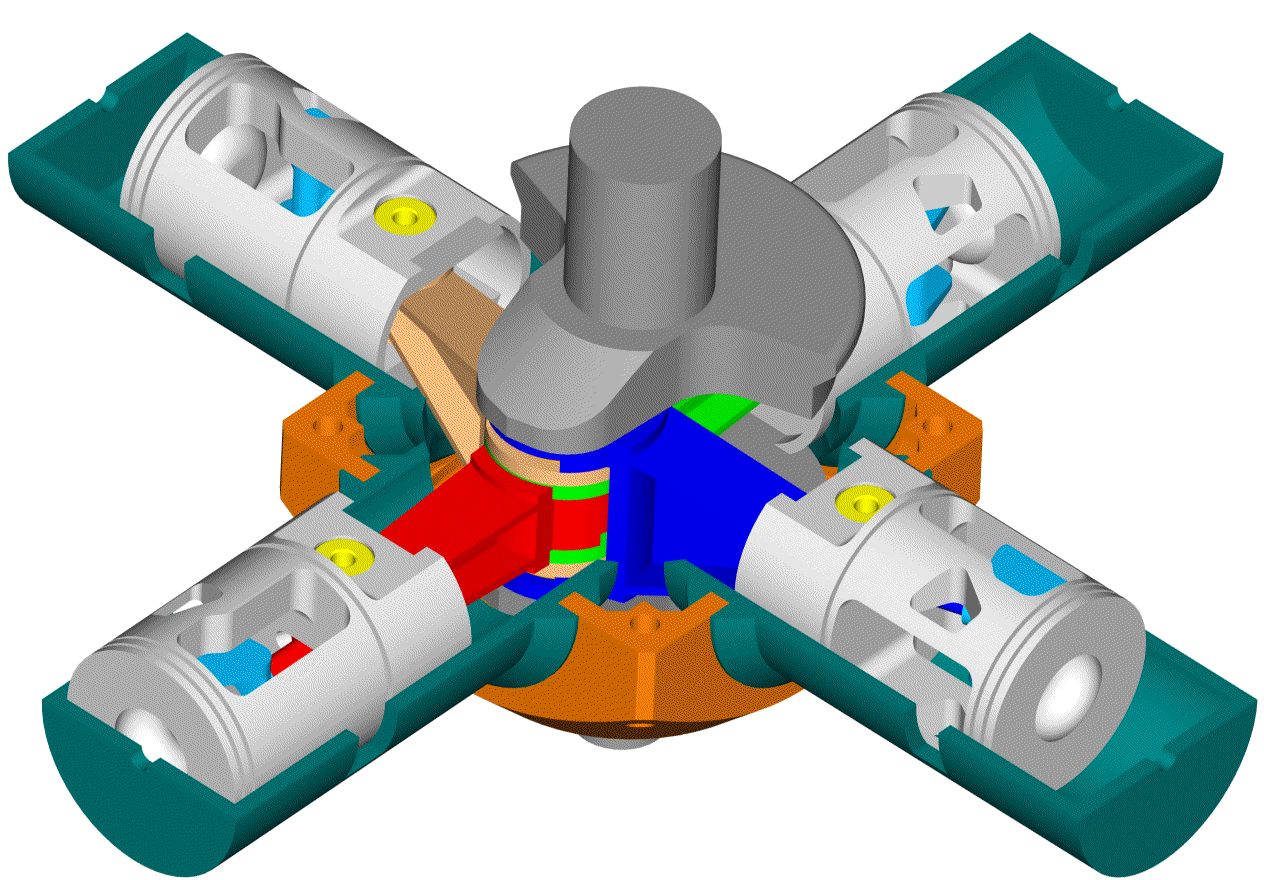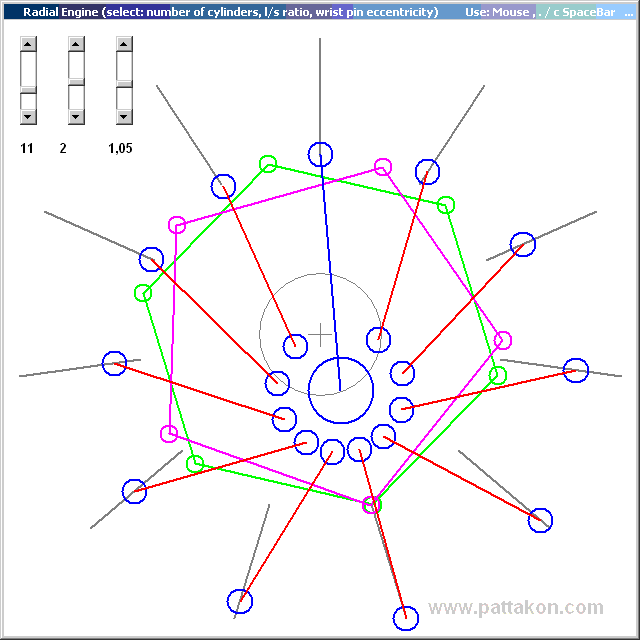Hello J.A.W.
You write:
“Re: fueling-intake/exhaust systems - can you show what you have planned, for your 'Flyer' machine?”
OPRE Tilting 2-stroke / Portable Flyer:
Premixed, with port injection in the intake opening of the crankcase.
Note: the crankcase (i.e. the space inside the piston wherein the crankshaft rotates) is not pressurized (in the conventional 2-strokes the crankcase is pressurized and needs good sealing of the crankshaft bearings), however this space inside the piston is the busiest.

The “tuning” is based more on the intake than on the exhaust.
The transfer ports open, and the scavenging starts with the exhaust ports already open, but earlier than in the conventional 2-stroke.
The pressure into the “scavenge pump” (sealed by the opposite to the “combustion chamber end” of the piston) allows such timing.
Later the tilting valve opens and the scavenging continues based on the inertia of the gas column formed: open tilting-valve-port on the piston, space into the scavenge pump, transfer passageways, transfer ports, combustion chamber, exhaust ports, exhaust.
Air-fuel-oil-mixture from the “crankcase” feeds this “inertia” column, while the “crankcase” is fed, through the intake port, with air-fuel-oil-mixture.
When the piston finally closes the transfer ports, the suction of air-fuel-oil-mixture from the intake port into the “crankcase” continues due to the subpressure created into the “scavenge pump” as the piston moves towards the TDC with the tilting valve wide-open. After the TDC the tilting valve closes and the air-fuel-oil-mixture trapped inside the “scavenge pump” is compressed waiting the transfer ports to open by the piston.
And so on.
If the previous are confusing, I can further explain.
An interesting question is how much less lubricant oil is required than in a conventional 2-stroke: because the OPRE Tilting takes the thrust loads away from the hot exhaust ports, at the “scavenge pump side” (or wrist pin side, or cool side) of the piston skirt.
Thanks
Manolis Pattakos




